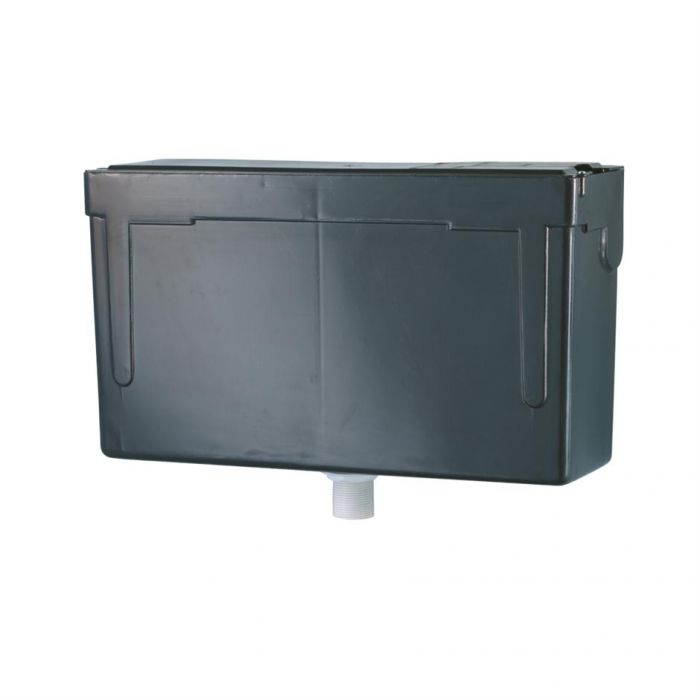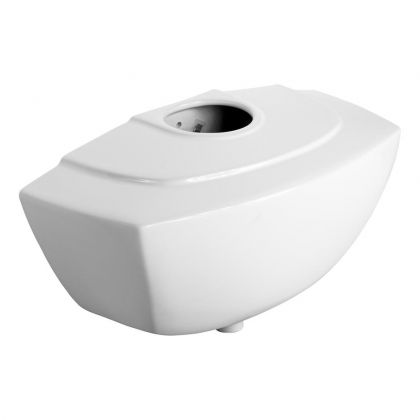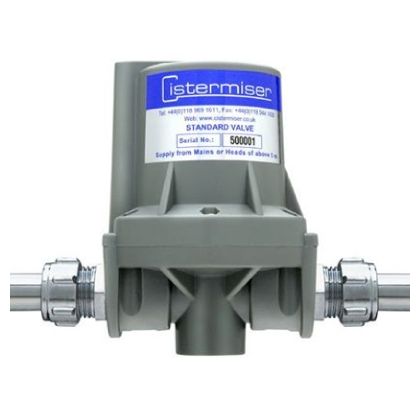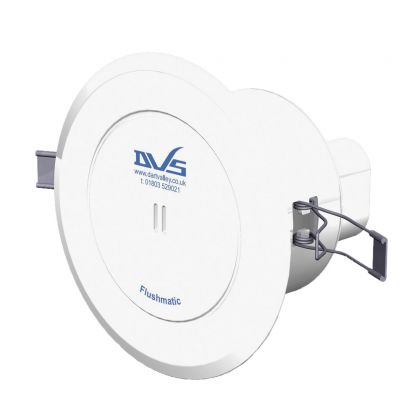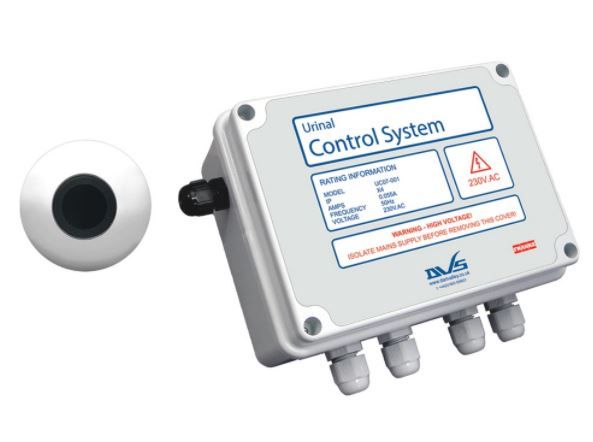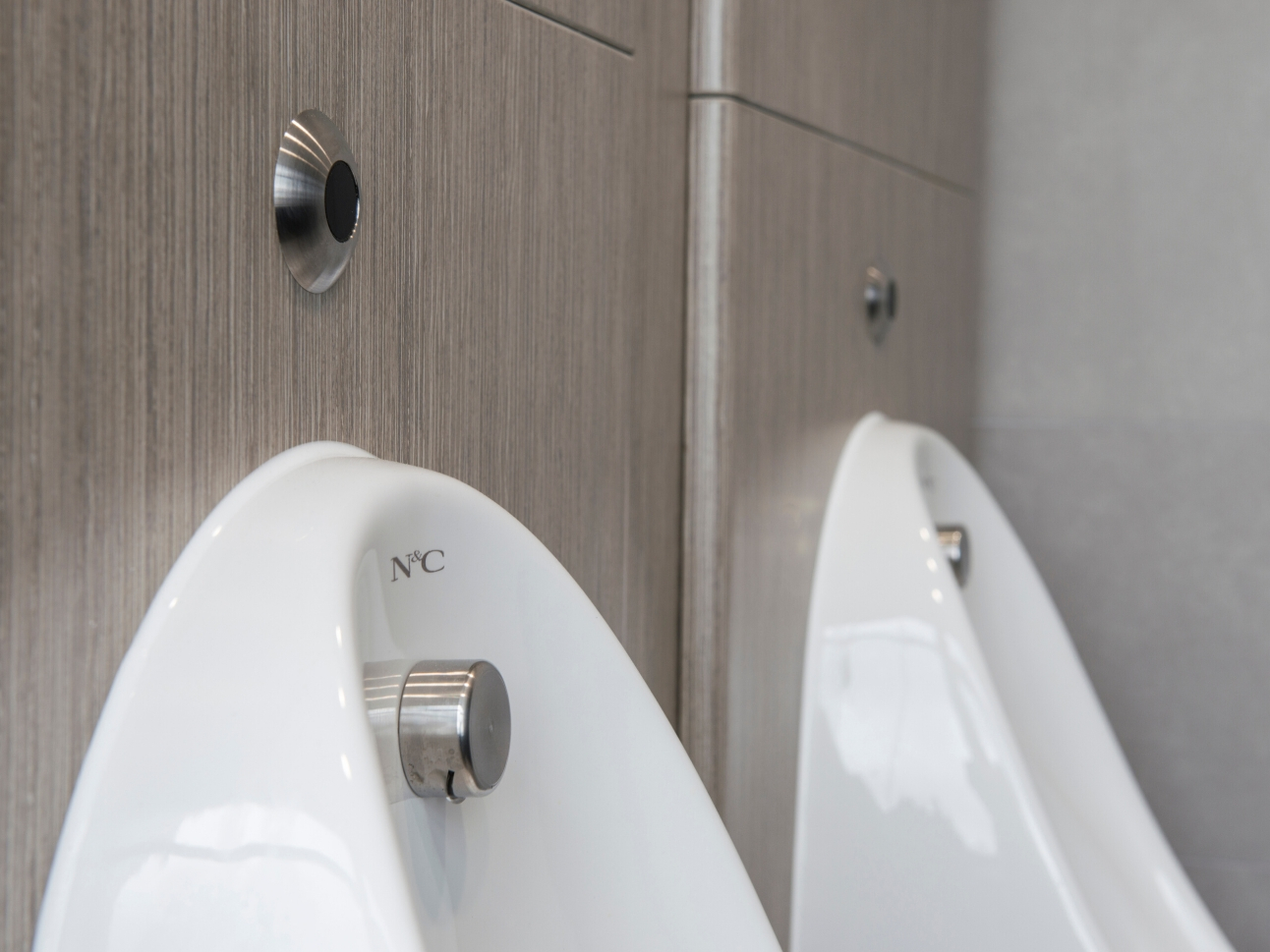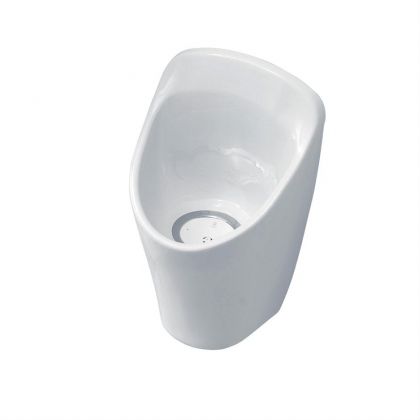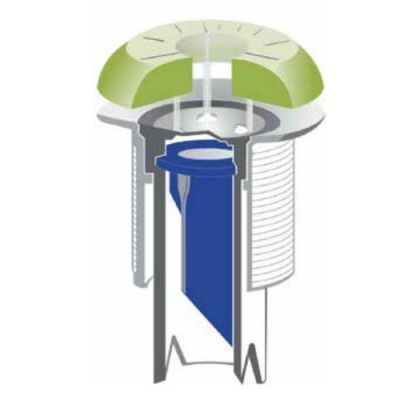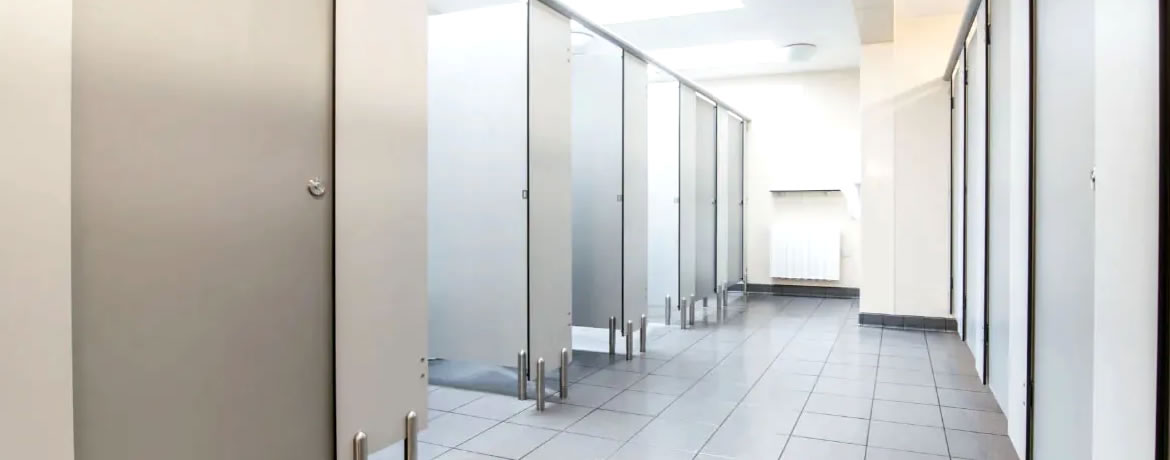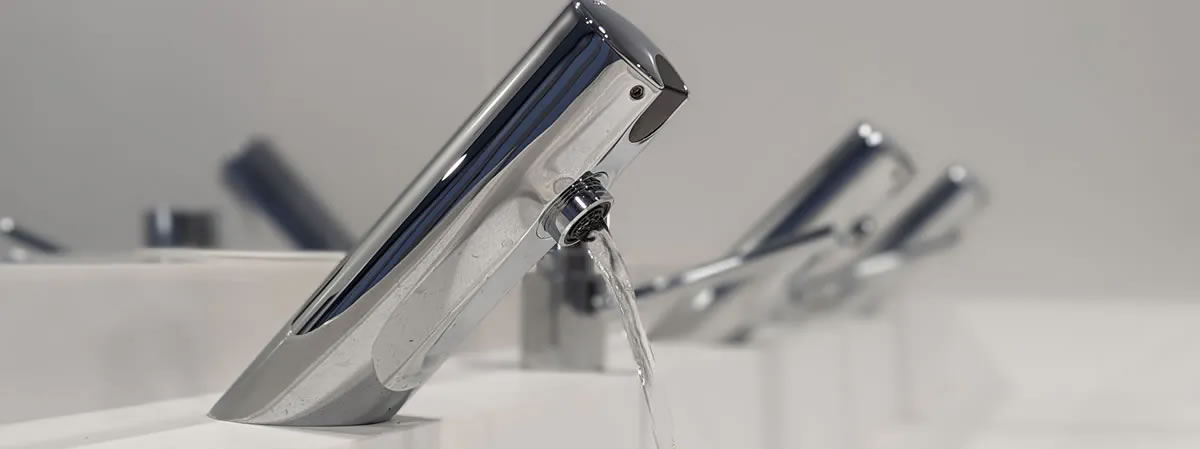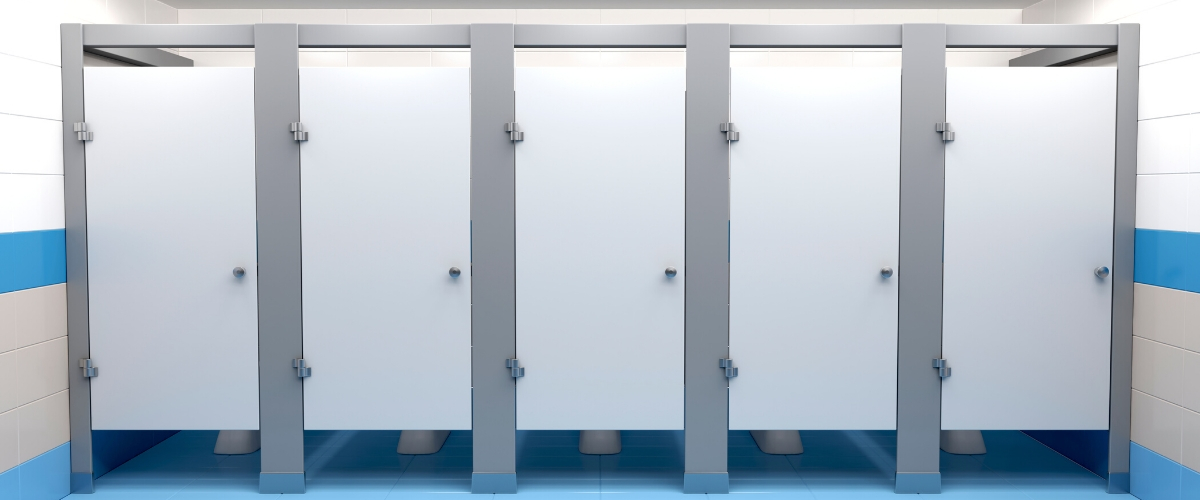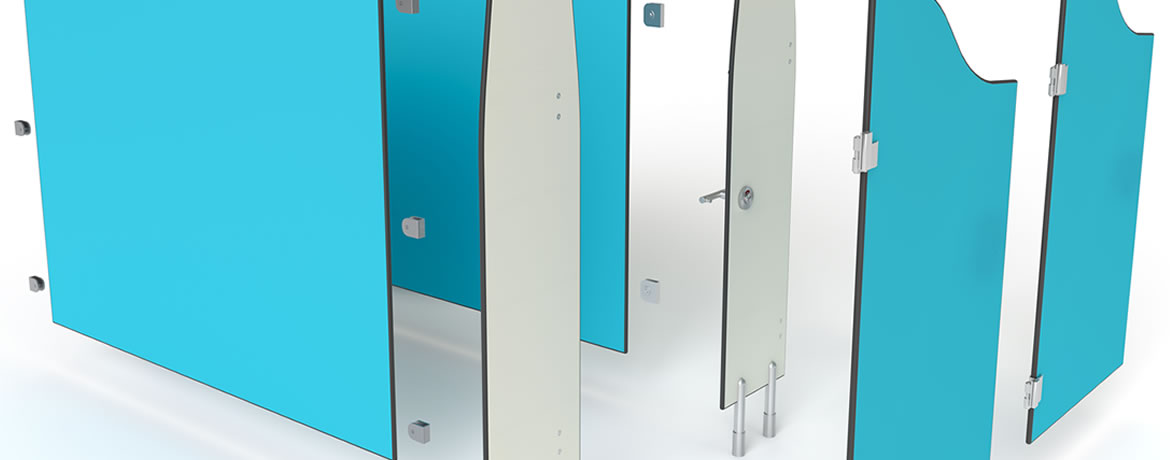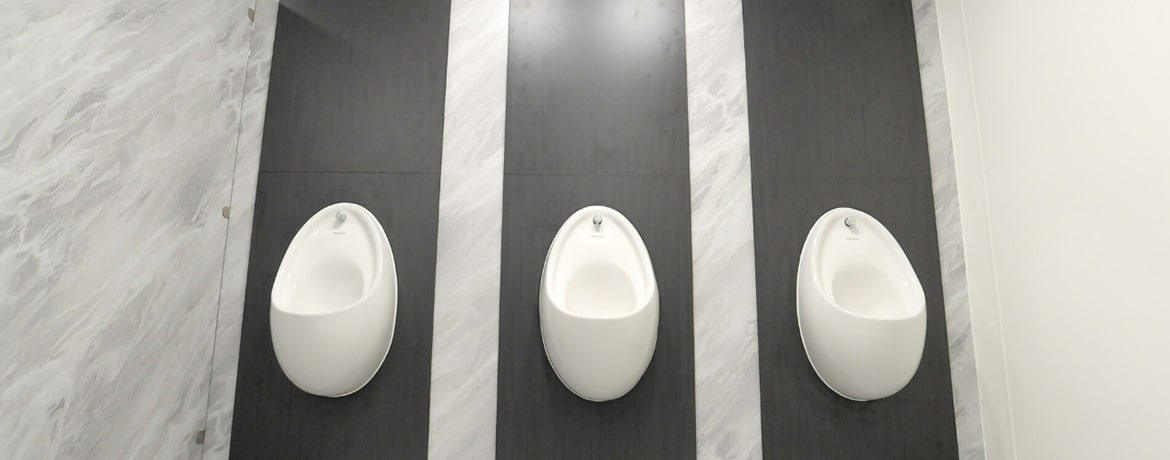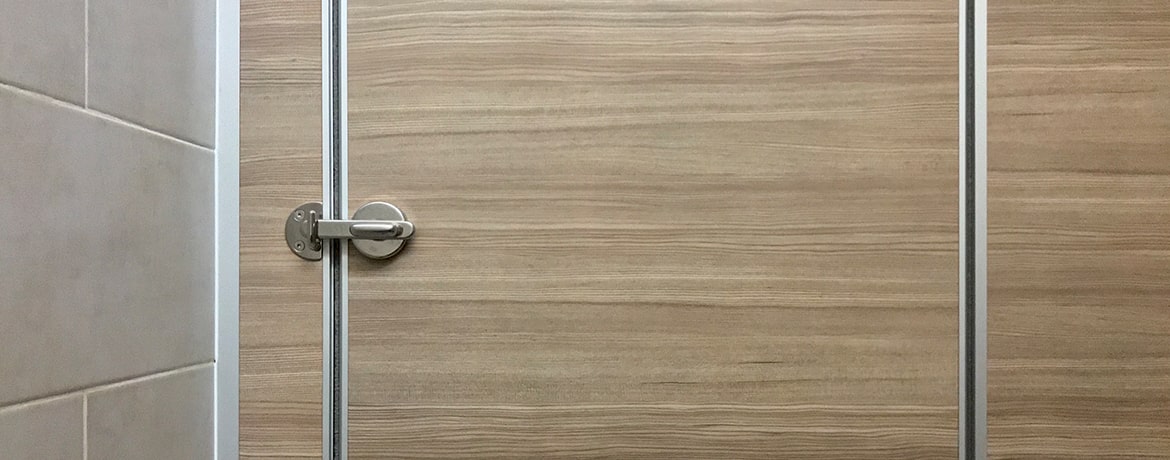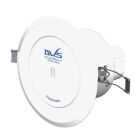Understanding urinals and how they flush
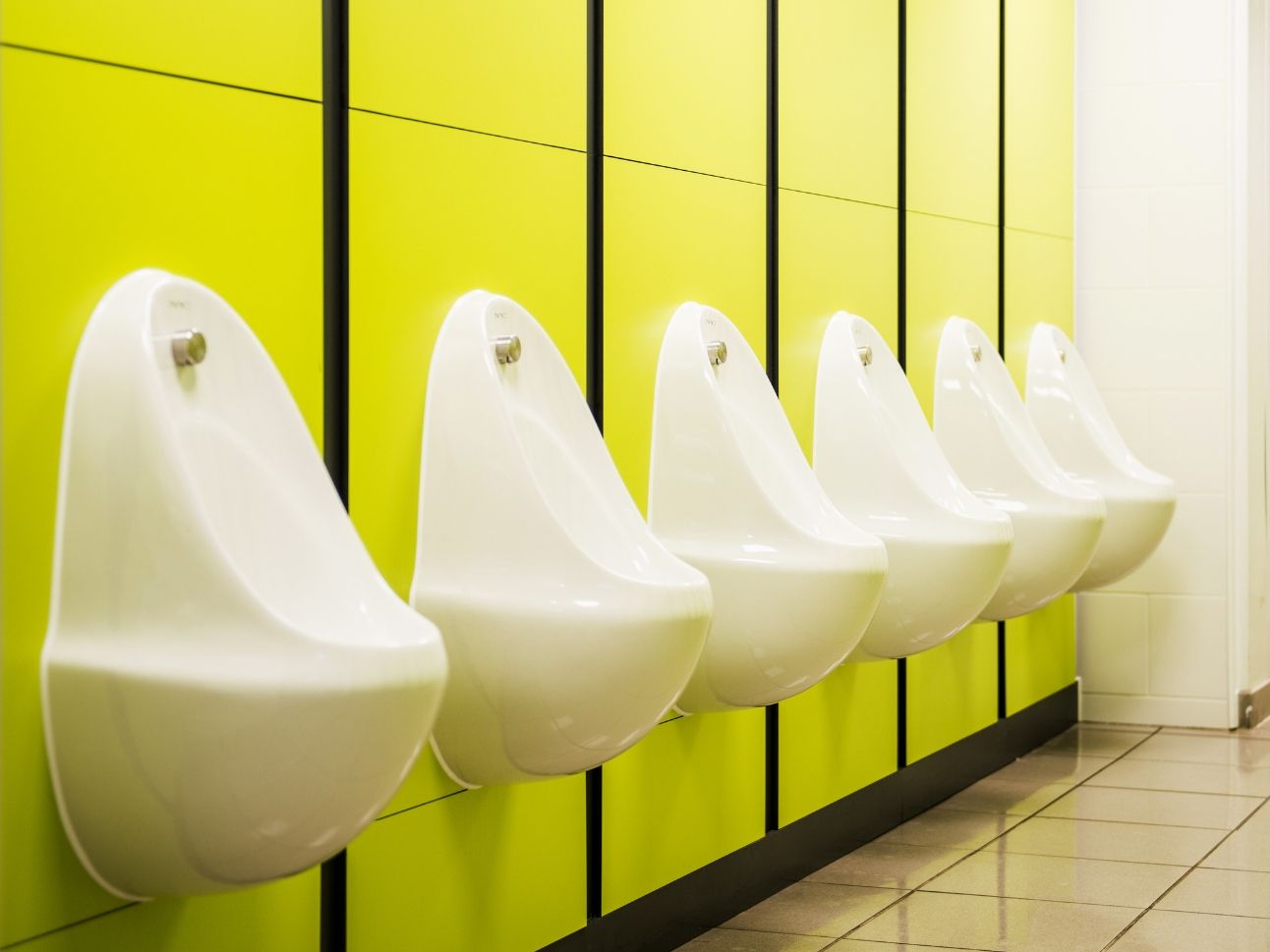
Urinals and urinal cisterns are probably the hardest public toilet fixtures to sell online simply because many people even those who already have them, do not understand how they work or the considerations when ordering. One of the most common areas likely to confuse is urinal flushing since unlike a regular toilet, urinals usually do not flush in response to user input.
How a Urinal Flushes depends on the Urinal System Anatomy.
Exposed Cistern Urinal Systems
Exposed cistern urinals are designed so that the cistern is to be wall-mounted externally and thus on view, above the height of the urinals in the washroom. This means the sparge pipes (often also called the flush pipes), are also to be externally mounted and visible on the walls.
Concealed Cistern Urinal Systems
Concealed cistern urinals are designed so that the cistern is to be hidden from view, perhaps behind IPS duct wall panels, wall cladding, or within a wall void in the washroom. This means the sparge pipes will also be concealed and run behind the panels or cladding or within the void.
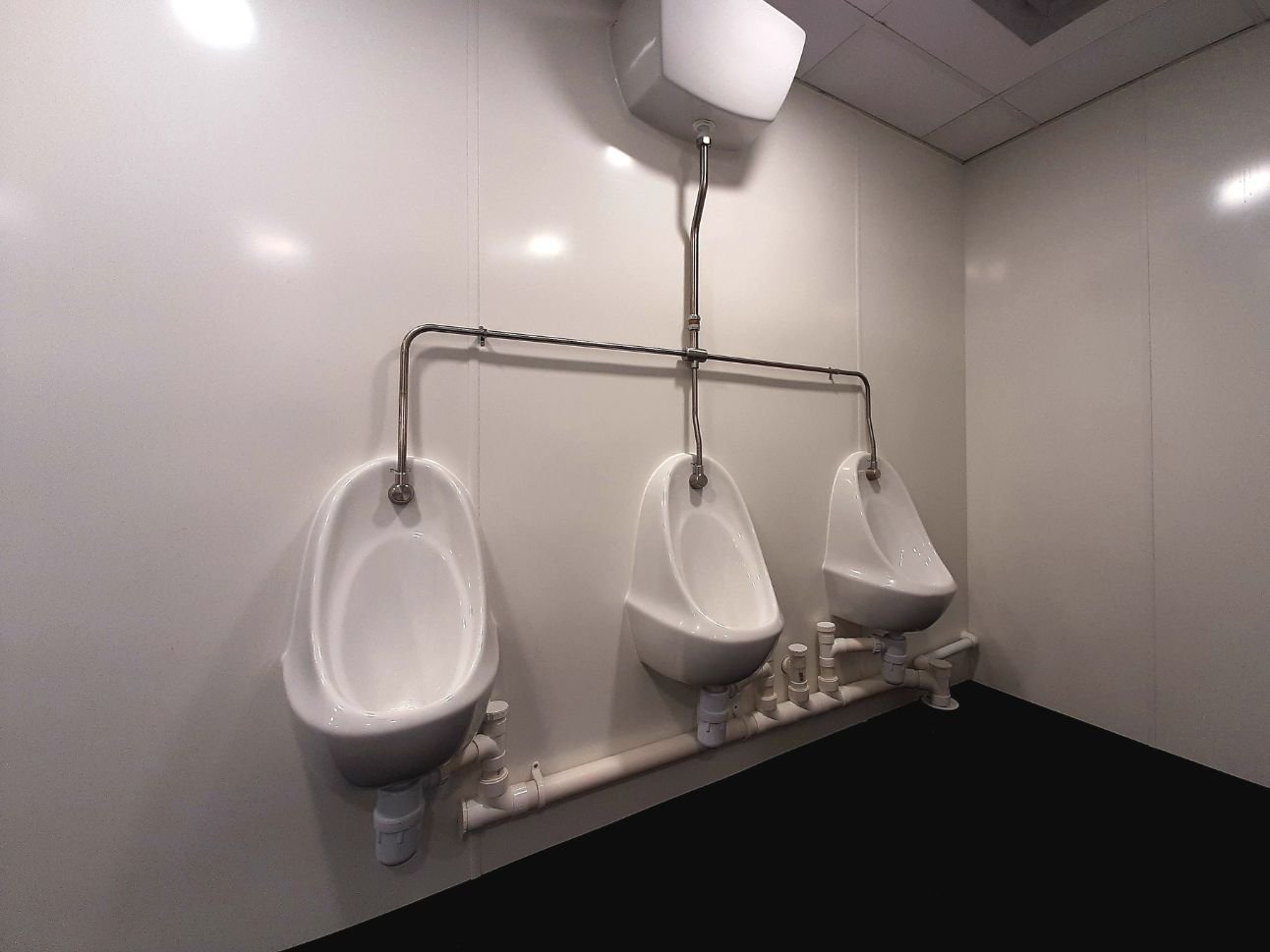
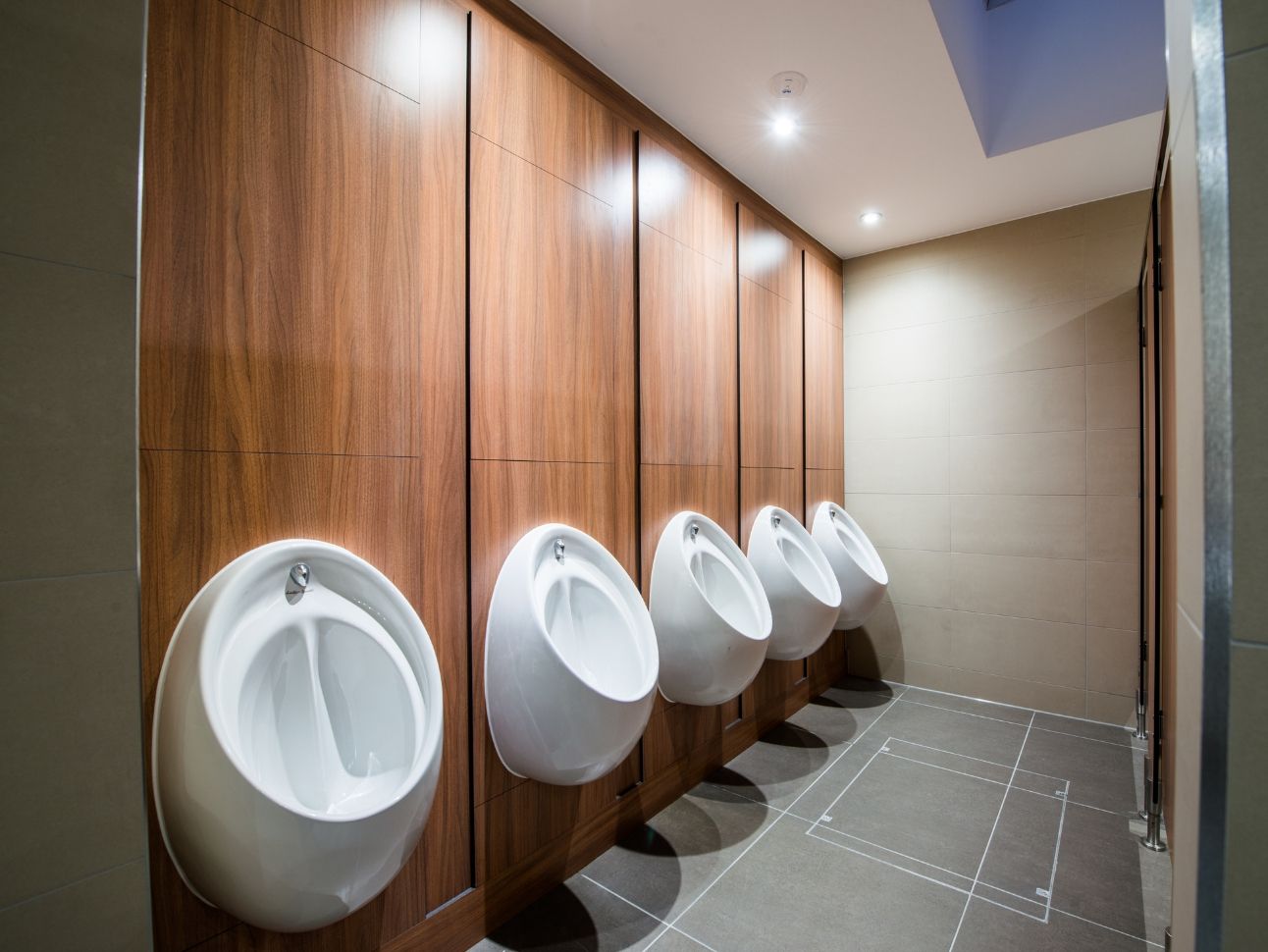
Second: We need to pick our type of Spreader.
Spreaders, which connect to the flush pipes at the urinal are designed to spread the flushing water in the urinal to both sides of the bowl to ensure a full and clean flush. These are typically included within all the full urinal kits we sell as they are essential for a flushing urinal. In exposed cistern urinal kits these spreaders typically sit on top of the bowl secured by the pipework. In concealed cistern or mains flushing urinals, the spreaders typically exit through the wall, wall cladding or panelling and then through a hole in the top of the urinal.
Third: We need to choose our type of Urinal Flushing.
There are three main ways of dealing with the waste from a urinal;
- Flushing the urinals via a cistern (auto cistern)
- A direct mains water fed flush,
- Not to flush the urinal at all but to install a waterless urinal system.
Auto-cistern Urinal Flush.
An auto cistern is usually the term applied to a urinal cistern. Urinal cisterns like toilet cisterns come in plastic or vitreous china, plastic cisterns are typically for concealed installations, i.e. behind wall cladding, ducting or within a wall void. The vitreous china cisterns are more aesthetic and usually for exposed installations where the sparge pipes and the cistern will be wall-mounted.
Despite the name ‘auto cistern’ there is nothing automatic about them, they are simply a vessel for stored water with which the urinal will flush. The work is in fact all done by an auto syphon which will release the stored water down into the sparge pipes to flush the urinals once the water level within the cistern has reached a sufficient level.
Urinal Cistern Flush Control.
Without some secondary form of flush control, a urinal cistern will continually and rapidly refill causing it to flush unnecessarily. In the past to slow this flushing cycle a petcock was used in the inlet pipe (which fills the cistern). A petcock is simply a plastic bung placed within the inlet pipe, usually with a screw to adjust the inner aperture of the petcock to adjust the flow of water through it. This restriction within the pipe by the petcock would slow the water entering the cistern and allow the plumber to adjust the refill and thus flush times of the cistern.
As you can appreciate petcocks are not the ideal solution since even when a venue or premises is closed or quiet the flushing interval will not alter and this will waste a considerable amount of water. Hence for the last few years, the use of a petcock within a urinal flushing system has been outlawed by Schedule 2, section 9, and paragraph 25 of the Water Regulations.
The new and accepted solution and advice are to install an approved urinal flush control with all auto-cisterns and urinals.
Hydraulic Valve urinal flush control.
Hydraulic valve urinal flush controls such as the Cistermiser range is installed in-line with the water supply inlet pipe into the cistern and sense short-term drops in pressure within the water supply. Each time a drop in pressure is identified the valve releases a measured amount of water into the cistern.
These short-term drops in water pressure are caused by the use of taps or toilet flushing and while not directly measuring the usage of the urinal, at least refill the cistern in-line with an approximated frequency of use of the washroom as a whole. This will reduce the frequency of flushing while the venue or premises and its washrooms are not being used. Typically these units can be configured to still allow for a janitorial flush every 12 hours to reduce unpleasant odours from urinals even when the washrooms are not being used.
Hydraulic valve urinal flush controls will return substantial water saving over typical petcock controlled flush cycles and will satisfy water regulations. There is also a hydraulic valve flush controller to suit any type of water pressure, from standard (tank-fed or mains pressure) to low-pressure tank-fed washrooms.
PIR Sensor urinal flush control.
PIR or Passive Infrared urinal flush controls like those produced by Dart Valley Systems can be mounted upon the pipes, wall or ceiling and actually sense when a particular urinal or row of urinals is used, which is in contrast to a hydraulic valve which only senses when a washroom as a whole is used.
When the urinals are used the PIR sensor flush control will begin a fill-cycle of the cistern that can take up to 15 minutes, with an adjustable delay before this process starts too. PIR sensor urinal flush controls can also be supplied as downlighters for installation into suspended ceilings providing a more streamlined aesthetic finish to a commercial washroom space.
Sensor urinal flush controls will also allow for a janitorial flush each and every 12 hours even when the washroom is not being used to prevent unpleasant odours. Sensor flush controls can return up to an 80% water saving on petcock controlled urinal flush systems and will satisfy water regulations.
The mains flush can be controlled by a button, sensor, or lever. In the case of the urinal push button and lever flush depending upon preference, the pipework can be run concealed or exposed, and sparge pipes are not required only normal 15mm or 22mm diameter water piping. In the case of sensor mains flush systems, it is preferential to run the pipework in a concealed fashion so as not to have the electronics exposed to the user.
Urinal Mains Water Flushing.
Urinal Mains Water Flushing Sensors are popular in School Toilet Designs as they are vandal proof and helps ave water.
Most urinal bowls can be used within a mains flush system, and you will not need either the exposed or concealed pack, but only the urinal bowl, bowl fixings or brackets, grid waste. Additionally, a separate spreader for each bowl will need to be purchased, since these usually only come as part of a pack.
Waterless Urinals.
Waterless urinals are those which do not need to be flushed by a cistern, these are ideal for commercial washrooms which may not have plumbing or space for a high-level cistern or other difficulties in the existing configuration that prohibits installation of typical urinal system. However, they still require waste pipes as a means to remove the urine.
Waterless urinals do typically require more day to day maintenance than regular urinals, with regular changing of chemical cartridges or top-ups of chemicals required. But as washrooms should be regularly cleaned this should not pose too much of a difficulty, however.
There are two types of waterless urinal, those specifically manufactured for waterless use and then regular water flushing urinals retrofit to work in a waterless configuration. Both work by neutralising the urine smell and preventing it from backing up into the bowl only allowing it to drain away. Waterless urinals should not be used with bottle traps, however.
Fourth: We must consider which Urinal Waste is most applicable.
Bottle Trap.
Bottle traps as perhaps best known for their use on sinks are the most widely used trap for urinals, we widely recommend white plastic wastes for urinals due to the difficulties in keeping chrome effect bottle traps clean. In the event, the bottle trap or in fact pipework further along the system becomes blocked the bottle traps can be easier to clear. However, if the urinal flushing system fails for whatever reason the bottle trap may more readily block or spring a leak than perhaps an S trap or P trap will. They are also not recommended for waterless urinals as they will store too much waste urine in the bottle portion of the trap since they do not flush.
S traps and P traps for Urinals.
We do not usually recommend either S-traps or P traps for urinals or urinal troughs though they can be used. The reason they may be preferred is that they are free-flowing and after flushing, the water within the trap will likely be clean water rather than still containing traces of urine as in a bottle trap. However, with a smaller diameter than the bottle trap with an incorrectly set flush frequency, they will more readily block and will be harder and more labour intensive to clear than a bottle trap.
MORE TO EXPLORE IN Related Posts

Delabie Tempostop 2 Soft Touch Urinal Push Flush Valve

DVS Urinal Sensor Flush Control Kit (single station)

Cistermiser Standard Hydraulic Urinal Flush Control Valve

